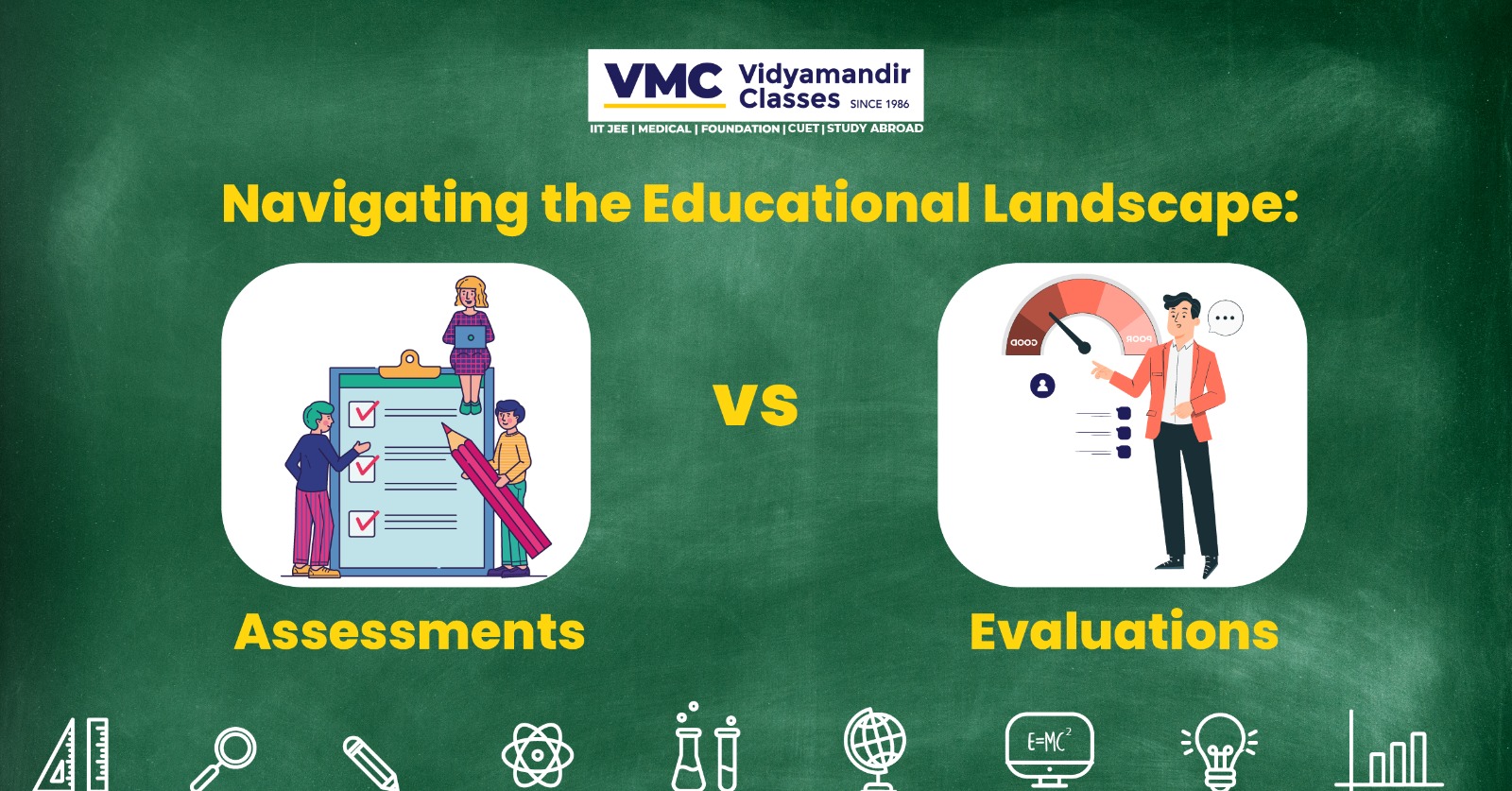Navigating the Educational Landscape: Assessments vs. Evaluations
 Posted On
Posted On
435 total views, 1 views today
In the realm of education, the terms “assessment” and “evaluation” are often used interchangeably, causing confusion. However, they serve distinct purposes and play unique roles in shaping the learning experience. Let’s dive into the meanings of these terms, unveil their essence, and shed light on their distinct contributions to education.

Understanding Assessments:
Definition: Assessments involve the continuous process of collecting information about a student’s knowledge, skills, and abilities. They utilize various methods, from informal observations and class discussions to formal quizzes, assignments, and projects.
Types of Assessment: There are two primary types of assessments:
- Formative assessments: Conducted during the learning process, they provide immediate feedback to students and educators, helping refine teaching methods.
- Summative assessments: Occur at the end of a learning period, evaluating overall learning outcomes.
Understanding Evaluations:
Definition: Evaluations encompass judgments about the effectiveness of educational programs, curriculum, and instructional methods. They go beyond student performance to assess the overall impact of the educational experience.
Types of Evaluation: Three common types of evaluation are:
- Diagnostic evaluation: Identifies student strengths and weaknesses before instruction begins.
- Formative evaluation: Happens during instruction, aiming to improve teaching methods.
- Summative evaluation: Measures overall achievement of learning outcomes.
Key Differences Between Assessment and Evaluation:
- Purpose and Goals: Assessment focuses on monitoring individual student progress and providing timely feedback, while evaluation assesses the effectiveness of instructional strategies and programs.
- Timing and Frequency: Assessment is ongoing and frequent, while evaluation typically occurs at specific intervals.
- Scope and Focus: Assessment is micro-level, while evaluation has a macro-level perspective.
- Methods and Tools: Assessment methods include quizzes, assignments, and discussions, while evaluation methods involve rubrics, standardized tests, and surveys.
Benefits of Effective Assessment and Evaluation:
Benefits of Assessment:
- Personalized Growth
- Continuous Improvement
- Empowering Learners
Benefits of Evaluation:
- Informed Decision-Making
- Enhanced Accountability
- Program Enhancement
- Evidence-Based Growth
Relationship Between Assessments and Evaluations:
Assessments and evaluations are interconnected. Insights from assessments inform evaluations, and evaluation outcomes guide the refinement of assessment strategies. They work collaboratively to enhance the educational experience.
Role of Feedback from Assessments and Evaluations:
Feedback from assessments serves as a real-time mirror for individual learners, highlighting strengths and areas for improvement. Evaluation-based feedback informs program and strategy optimization, driving positive change.
Challenges and Considerations:
Assessments and evaluations come with challenges, including the need for valid and reliable methods, avoiding overreliance on one assessment type, and addressing biases. Balancing assessment and evaluation is crucial for continuous improvement in education.
Final Thoughts:
In summary, assessments and evaluations are essential components of the educational journey. Understanding their differences and leveraging their strengths can lead to a dynamic and responsive education system that continually improves teaching methodologies and enhances student outcomes.




